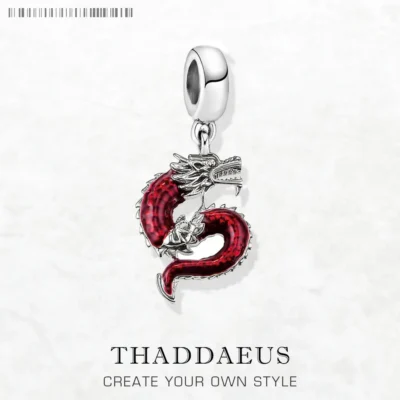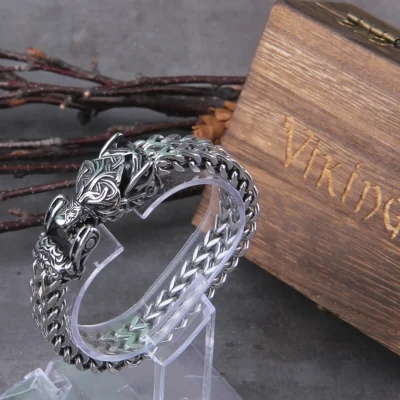
The Red Dragon of Wales: Y Ddraig Goch
The Welsh Dragon, known as Y Ddraig Goch in Welsh, has long been a symbol of Wales appearing on flags, coats of arms, and architecture across the country. According to ancient myths and medieval legends, this fiery red creature was a harbinger of strife and war, but also a sign of hope and redemption. Tales of its origins are steeped in magic, mystical omens, and Britain’s early kingdoms now relegated to legend. The stories tell of great wizards like Merlin, early kings like Vortigern and Cadwaladr, battles between Britons and Saxons, and links to real places scattered across Wales. What is the truth behind this iconic national symbol, the legends that surround it, and the real history that inspired these tales? This article looks into the myths, prophecies, stories and more behind the enduring legend of the Welsh Dragon.
The Story of the Red Dragon
Merlin’s Prophecy: Dragons Battling as Omens
One origin story of the red dragon dates back to a prophecy myth involving the great wizard Merlin. According to Geoffrey of Monmouth in his 12th century writings, King Vortigern was trying to build a fortress in Wales when the foundation repeatedly collapsed. His advisers told him that only the blood of a fatherless child sprinkled on the foundation would make it stand.
Merlin was brought before the king as such a child and reported seeing a vision of a red dragon fighting and defeating a white dragon underground where the fortress was to be constructed. This was interpreted as a prophecy of the British defeating the invading Saxons. The red dragon then became a symbol of native British strength against foreign foes. Elements of this story featuring mystical prophecies and visions tie the Welsh Dragon to early kingdoms and real sites like Dinas Emrys where Merlin witnessed the dragons battling beneath the ground.
Cadwaladr and the Dragon as a Fiery Omen
A slightly different version of the red dragon myth features Cadwaladr, the last legendary Welsh king of Britain. In this tale, Cadwaladr has a dream foretelling that the red dragon will appear as a blazing fire – a heavenly sign predicting strife, war, and trouble in the land following his death. The fiery dragon was said to represent the conflicts that would come over who would rule Britain in the chaotic years to come. The myth ties the omen to real 7th century figures like King Cadwaladr of Gwynedd who resisted Northumbrian and Saxon attacks before his kingdom fell. The stories link the Welsh Dragon as an ancient sign foretelling coming violence and upheaval.


The Mabinogion Myths and Meanings
Overview of the Mabinogion
The Mabinogion is a collection of medieval Welsh mythology and folklore that contains some of the earliest prose stories of Britain. Originally an oral tradition, the tales were first compiled around the 12th century, though some elements may date back further. The myths feature mystical and magical creatures, early Celtic and British kings from legend, prophecies, and ancient beliefs now mostly forgotten. Two key stories involving dragons have links to the myths behind Wales’ red dragon symbol.
Lludd Llaw Eraint Battles Mystical Dragons
One of the most famous mythological kings in the Mabinogion is Lludd Llaw Eraint, whose name may derive from early Celtic gods of Britain. In one tale, three plagues afflict Lludd’s kingdom, two of them involving dragons – one an enormous shrieking beast that terrifies people, and another that settles on their land and causes people to fall into a permanent sleep.
With the help of his brother Llefelys, Lludd manages to trap the dragons and bury them underground, though they continue their slumber near a mythical pool. This story featuring mystical dragons may echo legends of real Welsh kings now obscured behind fantasy, or represent ancient pagan beliefs.
Echoes of Early Legendary Figures
Besides Lludd, other early mystical figures of Welsh and Celtic legend make appearances in the Mabinogion, from Bran the Blessed to Cerridwen the witch. While dragons feature heavily in the myths, the significance behind them was likely lost long ago. Nonetheless they demonstrate links between the later symbol of the proud Red Dragon and ancient stories of magical beasts, prophetic dreams, and early British and Welsh rulers later rendered mythical. The motifs tie the Welsh Dragon to Britain’s legendary past.
Dragons in the Time of Geoffrey of Monmouth
Merlin, Vortigern, and Uther Pendragon
The 12th century chronicler Geoffrey of Monmouth compiled early pseudo-histories of Britain that wove mythical tales of King Arthur and Merlin in with real rulers like Aurelius Ambrosius. Many of his stories involve Merlin giving prophecies and mystical visions for early British kings involving dragon motifs.
Besides the Vortigern tale of Cadwaladr seeing dragons battling underground, Geoffrey ties Merlin to other legendary figures like Uther Pendragon, said to be King Arthur‘s father. Merlin allegedly helped Uther to enter Tintagel Castle in disguise and father Arthur by magical trickery, events later retold in Richard Wagner’s Ring Cycle opera. Through his pseudo-histories, Geoffrey brought together mythical tales of Merlin, magical dragons, and early British kings that helped inspire later Arthurian legend.
Dinas Emrys: Dragon Links in Wales Today
Geoffrey of Monmouth claimed that Merlin’s prophecies took place at real sites scattered across Wales, lending mystical prestige to actual locations. One is Dinas Emrys in Snowdonia, said to be the hill where Merlin saw the vision of fighting red and white dragons as Vortigern attempted to build his fortress. Today Dinas Emrys is considered a magical and poetic spot drawing tourists intrigued by its legends. Whether Geoffrey invented his histories wholesale or drew from earlier oral traditions remains unclear, but locations like Dinas Emrys show that the legends surrounding the Welsh Dragon involve mystical places tied to real sites that can still be visited today. The dragon myths permeate the landscape.

The Welsh Dragon in Architecture
Dragons in Castles and Symbols
Several enduring castles and architectural sites across Wales prominently feature dragon iconography, symbols, and motifs. Two castles built by Edward I during his conquest of Wales in the 13th century, Caernarfon and Beaumaris, include multiple dragons on their crenellated walls, arches, and towers. Caernarfon’s Eagle Tower in particular bears statues of dragons with outstretched wings. Some historians believe these dragons were assertions of English royal power, while others argue the dragon motifs hearkened back to native Welsh princes and their ancient legends. The red dragon also appears on the Tudor Rose flag borne by Henry Tudor at the decisive Battle of Bosworth in 1485 when he seized the English crown, perhaps tapping into its mystique and power.
You Might Like These
-
Born of Fire Made of Legend T-Shirt – Welsh Dragon Design
Price range: $26.00 through $49.00 -
Cymru Welsh Dragon Minimalist T-Shirt – Gildan 5000
Price range: $26.00 through $45.00 -
The Red Dragon Rises T-Shirt – Welsh Dragon Shirt
Price range: $27.00 through $38.00 -
Believe in Dragons T-Shirt
Price range: $26.00 through $49.00 -
Red Dragon Charm Necklace – Protection and Strength
$25.00
The Significance of Dragons Over Time
The true significance of dragon imagery in Welsh architecture is much disputed. The motifs could represent the continuing importance of dragons as symbols of Wales through changing eras of power struggles. They may link modern castle-building campaigns back to mythical histories involving prophecy, Merlin, and early British kings. While their meaning is unclear, the prevalence of dragons visually tie this national emblem to real sites scattered across Wales. These symbols likely carried cultural resonance and meaning to both native Welsh and English rulers at different times of history, much as the legends of the fiery Red Dragon have continued capturing popular imagination and pride.
The Ancient Stories Live On
The Welsh Dragon or Y Ddraig Goch has become an iconic national symbol of Wales, appearing on flags and in architecture across the country. But behind this proud emblem lies centuries of legend and myth going back to medieval tales of warring dragons, mystical prophecies, early British and Welsh kings, and the wizard Merlin. The stories tell of magical dragons battling as omens foretelling coming strife, of legendary figures like Lludd Llaw Eraint fighting off mystical plagues and beasts, and real places tied to mystical pasts like Dinas Emrys where Merlin saw the dragons below ground. While fanciful, the myths point to the cultural resonance that dragons have carried in Wales since ancient times. The fiery Red Dragon endures as a symbol of identity and pride forged in the long ago legends and prophecies of a magical landscape. Whether myth or reality, Y Ddraig Goch represents the mystique of Wales and its people through the ages.
Legends Scattered Across the Land
The tales and myths behind the Welsh Dragon are inextricably linked to real places scattered across the country where many key events were said to have unfolded. Sites like Dinas Emrys lend mystique and poetic wonder to the hills and valleys tied to mystical tales of the past. The appearance of dragons on architecture from imposing Norman castles to Tudor battle standards reveal how this symbol endured across the eras, carrying cultural meaning that shifted for Welsh and English rulers alike. By tracing these stories and sites, one can better understand the essence of the Welsh Dragon and its continued importance over centuries of changing rule. The mythical origins of Y Ddraig Goch represent creative connections to a legendary past still echoing today in soaring castle walls and ageless peaks that kindle imaginations.











